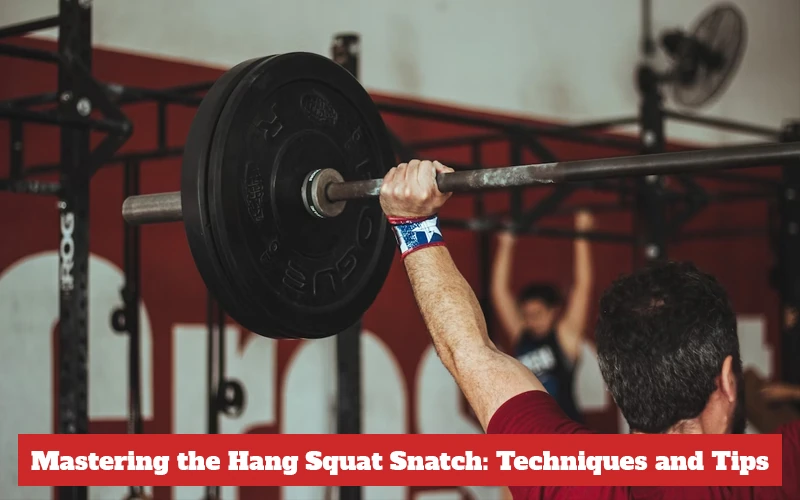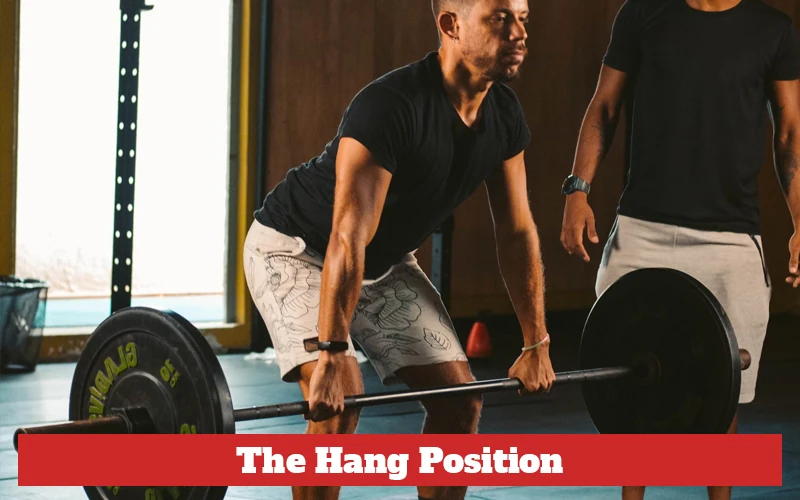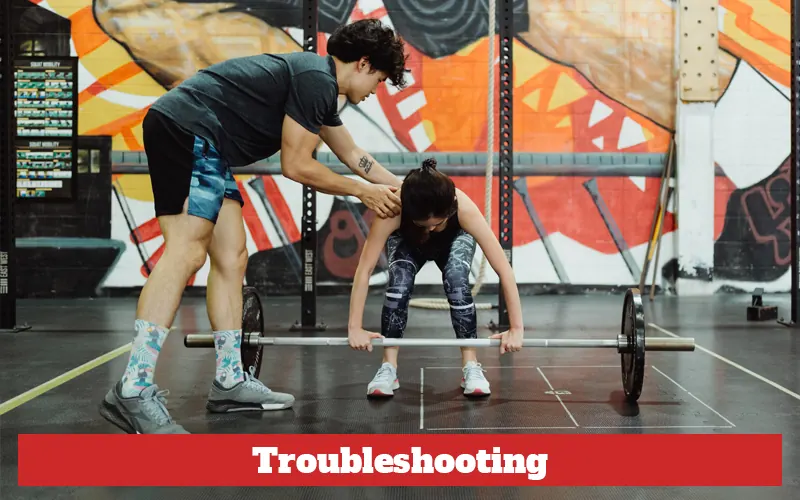
Are you looking to take your weightlifting to the next level? If so, you may want to consider adding the hang power snatch to your routine. This Olympic-style lift targets multiple muscle groups, including the shoulders, back, legs, and core, making it an effective and efficient exercise for building strength and power.
However, mastering the hang power snatch is no easy feat. Proper technique is crucial for not only maximizing results, but also preventing injury. In this comprehensive guide, we will cover everything you need to know about perfecting the technique of the hang power snatch. From the basics of the lift to advanced tips and tricks, we will help you improve your form and lift more efficiently.
So, whether you are a beginner just starting out or a seasoned weightlifter looking to take your skills to the next level, this guide is for you. Get ready to dive in and discover the secrets to mastering the hang power snatch.
Anatomy of the Hang Squat Snatch
The hang power snatch is a complex Olympic-style weightlifting exercise that targets multiple muscle groups throughout the body. Properly executing this lift requires an understanding of the anatomy involved and how each muscle group contributes to the overall movement.
Starting with the grip, the snatch involves a wide grip on the bar with the palms facing down. This grip engages the muscles in the forearms, upper back, and shoulders, as well as the biceps and triceps.
Moving on to the starting position, the lift begins with the bar resting at hip level. This position requires the muscles of the legs and glutes to engage, as well as the lower back muscles to keep the torso upright.
The first pull of the lift involves lifting the bar from the starting position to the hip. This portion of the lift requires the legs and glutes to engage even further, as well as the lower and upper back muscles to maintain proper form.
The second pull is where the explosive power of the lift comes into play. This part of the lift involves lifting the bar from the hip to the overhead position. This requires the engagement of the legs and glutes, as well as the upper back and shoulder muscles.
The final part of the lift is the catch, where the lifter catches the bar overhead in a deep squat position. This position requires the engagement of the legs and glutes, as well as the core muscles to maintain proper posture.
Also read: Maximize Training: Perform One Arm Dumbbell Snatch
Preparing for the Lift
Proper preparation is crucial for executing the hang squat snatch with proper form and technique. Without proper preparation, the lifter risks injury and may not achieve optimal lift performance. Warming up the body is an essential part of preparation, as it gets the muscles and joints ready for the lift. By performing warm-up exercises that target specific muscle groups involved in the lift, the lifter can improve their mobility, flexibility, and range of motion. This, in turn, can help the lifter achieve proper form and prevent injury during the lift.
In addition to warming up, proper grip, stance, and positioning are also critical for successful lift execution. The lifter should grip the bar with their palms facing down and keep their stance shoulder-width apart. The back should be straight and the core muscles engaged throughout the lift. By focusing on grip, stance, and positioning, the lifter can optimize their lift performance and prevent injury.
Overall, the hang power snatch is a complex and challenging exercise that requires proper preparation for successful execution. By warming up, focusing on grip, stance, and positioning, and getting in the right mindset, lifters can improve their lift performance and prevent injury. Additionally, practicing with lighter weights and using proper breathing techniques can also help improve lift performance and prevent injury. With proper preparation, lifters can safely and effectively incorporate the hang power snatch into their weightlifting routine.
The Hang Position

The hang position is a crucial part of the hang squat snatch that involves lifting the bar from the starting position at hip level to the position just above the knee. This position allows the lifter to generate momentum and prepare for the explosive second pull of the lift. Proper execution of the hang position requires proper form, grip, and positioning.
To execute the hang position correctly, the lifter should start with their feet shoulder-width apart and grip the bar with their palms facing down. The lifter should then lift the bar from the starting position at hip level and bring it down to the position just above the knee. The back should remain straight, and the core muscles should be engaged throughout the lift. The lifter should keep their shoulders back and down, and their elbows should be pointing outwards.
Common mistakes when executing the hang position include not maintaining proper form and grip, failing to engage the core muscles, and not keeping the shoulders back and down. These mistakes can lead to injury and may also prevent the lifter from achieving optimal lift performance. By focusing on proper form, grip, and positioning, lifters can optimize their lift performance and prevent injury during the hang position and the lift as a whole.
The Squat Position
The squat position is a crucial part of the hang squat snatch that involves catching the bar in a deep squat position after the second pull of the lift. This position allows the lifter to absorb the force of the bar and maintain proper form throughout the lift. Proper execution of the squat position requires proper form, positioning, and engagement of the lower body muscles.
To execute the squat position correctly, the lifter should start with the bar in the overhead position, with their feet shoulder-width apart. The lifter should then bend their knees and lower their body into a deep squat position, with their thighs parallel to the ground. The back should remain straight, and the core muscles should be engaged throughout the lift. The lifter should keep their shoulders back and down, and their elbows should be pointing outwards.
Common mistakes when executing the squat position include not maintaining proper form and positioning, failing to engage the lower body muscles, and not keeping the shoulders back and down. These mistakes can lead to injury and may also prevent the lifter from achieving optimal lift performance. By focusing on proper form, positioning, and engagement of the lower body muscles, lifters can optimize their lift performance and prevent injury during the squat position and the lift as a whole.
In addition to executing the squat position correctly, lifters can also benefit from incorporating squat exercises into their weightlifting routine to improve their strength and mobility in the lower body. Squat exercises such as front squats, back squats, and goblet squats can help lifters improve their squat position and overall lift performance.
The Snatch
The snatch is the final part of the hang squat snatch and involves lifting the bar from the hip to the overhead position in one explosive movement. This part of the lift requires the engagement of multiple muscle groups and proper form and technique.
To execute the snatch correctly, the lifter should start with the bar in the hang position, with their feet shoulder-width apart and grip on the bar with their palms facing down. The lifter should then explosively lift the bar from the hip to the overhead position, extending their hips and legs, and shrugging their shoulders. The lifter should then pull their body under the bar and catch it in the squat position, with their thighs parallel to the ground and their arms fully extended.
Common mistakes when executing the snatch include not engaging the legs and glutes enough during the second pull, failing to fully extend the hips and legs, and not properly pulling the body under the bar during the catch. These mistakes can lead to injury and may also prevent the lifter from achieving optimal lift performance. By focusing on proper form, engaging the necessary muscle groups, and practicing with lighter weights, lifters can optimize their lift performance and prevent injury during the snatch and the lift as a whole.
In addition to executing the snatch correctly, lifters can also benefit from incorporating exercises that target the muscle groups involved in the lift, such as the legs, glutes, shoulders, and upper back. Exercises such as squats, deadlifts, and overhead presses can help lifters improve their strength and mobility in these muscle groups, leading to improved lift performance during the snatch and other weightlifting exercises.
Troubleshooting

Troubleshooting is an important aspect of the hang power snatch, as lifters often encounter issues during the lift that can impact their form, technique, and performance. Common issues that lifters face include not fully extending during the second pull, failing to engage the necessary muscle groups, and improper grip and positioning.
To troubleshoot these issues, lifters should focus on improving their form and technique, engaging the necessary muscle groups, and practicing with lighter weights. For example, if a lifter is failing to fully extend during the second pull, they may benefit from incorporating exercises that target the leg and glute muscles, such as deadlifts and squats. If a lifter is failing to engage the necessary muscle groups, they may benefit from focusing on proper grip, stance, and positioning during the lift and practicing with lighter weights to perfect their form and technique.
Another common issue lifters face is improper grip and positioning. To troubleshoot this issue, lifters should focus on adjusting their grip and stance to better suit their body type and lifting style. Additionally, lifters can benefit from practicing with lighter weights and working on their form and technique to ensure proper grip and positioning during the lift.
By troubleshooting these common issues and focusing on improving form, technique, and engagement of the necessary muscle groups, lifters can optimize their lift performance and prevent injury during the hang squat snatch and other weightlifting exercises.
Programming and Variations
Programming and variation are essential aspects of any weightlifting routine, including the hang power snatch. Programming involves designing a structured plan for training that includes specific exercises, sets, and repetitions, while variation involves changing the exercises, sets, and repetitions to prevent plateaus and optimize results.
When programming for the hang power snatch, lifters should focus on gradually increasing weight and volume over time. This can be achieved through a variety of sets and repetitions, such as performing multiple sets of 3-5 repetitions with increasing weight, or performing 1-2 sets of 8-10 repetitions with a moderate weight. The key is to gradually increase the weight and volume over time, while maintaining proper form and technique.
Variation is also essential for preventing plateaus and optimizing results. Lifters can incorporate variation in several ways, such as changing the exercises performed, altering the sets and repetitions, or incorporating different training styles such as powerlifting or Olympic weightlifting. For example, lifters can perform variations of the hang squat snatch, such as the power snatch or the hang power clean, to target different muscle groups and challenge the body in new ways.
Conclusion
In conclusion, the hang power snatch is a complex and challenging exercise that requires proper form, technique, and preparation for successful execution. Lifters can optimize their lift performance and prevent injury by warming up properly, focusing on grip, stance, and positioning, getting in the right mindset, practicing with lighter weights, using proper breathing techniques, and troubleshooting common issues that arise during the lift.
Programming and variation are also essential aspects of any weightlifting routine, including the hang power snatch. By designing a structured plan for training that includes specific exercises, sets, and repetitions, and incorporating variation in the exercises, sets, and repetitions, lifters can prevent plateaus and optimize results. Additionally, rest and recovery are crucial for preventing injury and improving flexibility.
Overall, the hang squat snatch can be a rewarding and effective exercise when executed properly and incorporated into a well-rounded weightlifting routine. By focusing on proper form, technique, preparation, programming, variation, and rest and recovery, lifters can optimize their lift performance, achieve their desired results, and minimize the risk of injury.